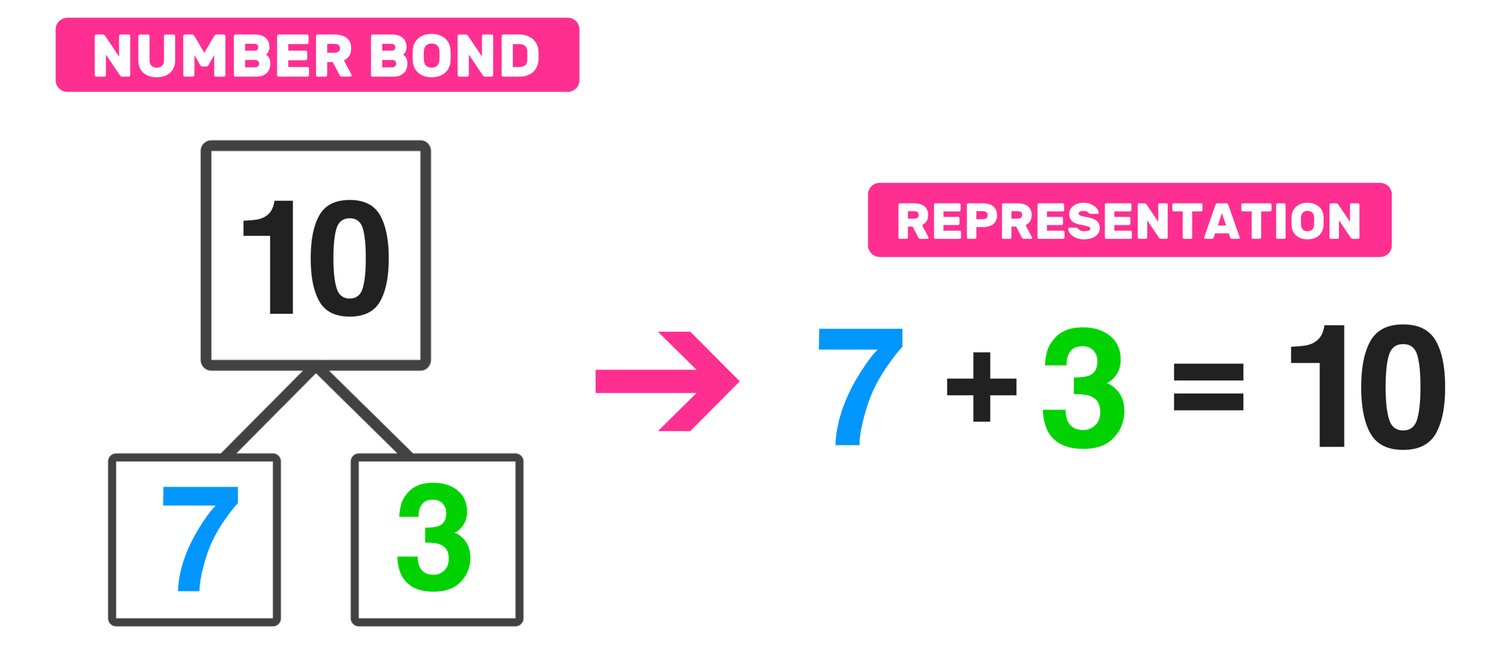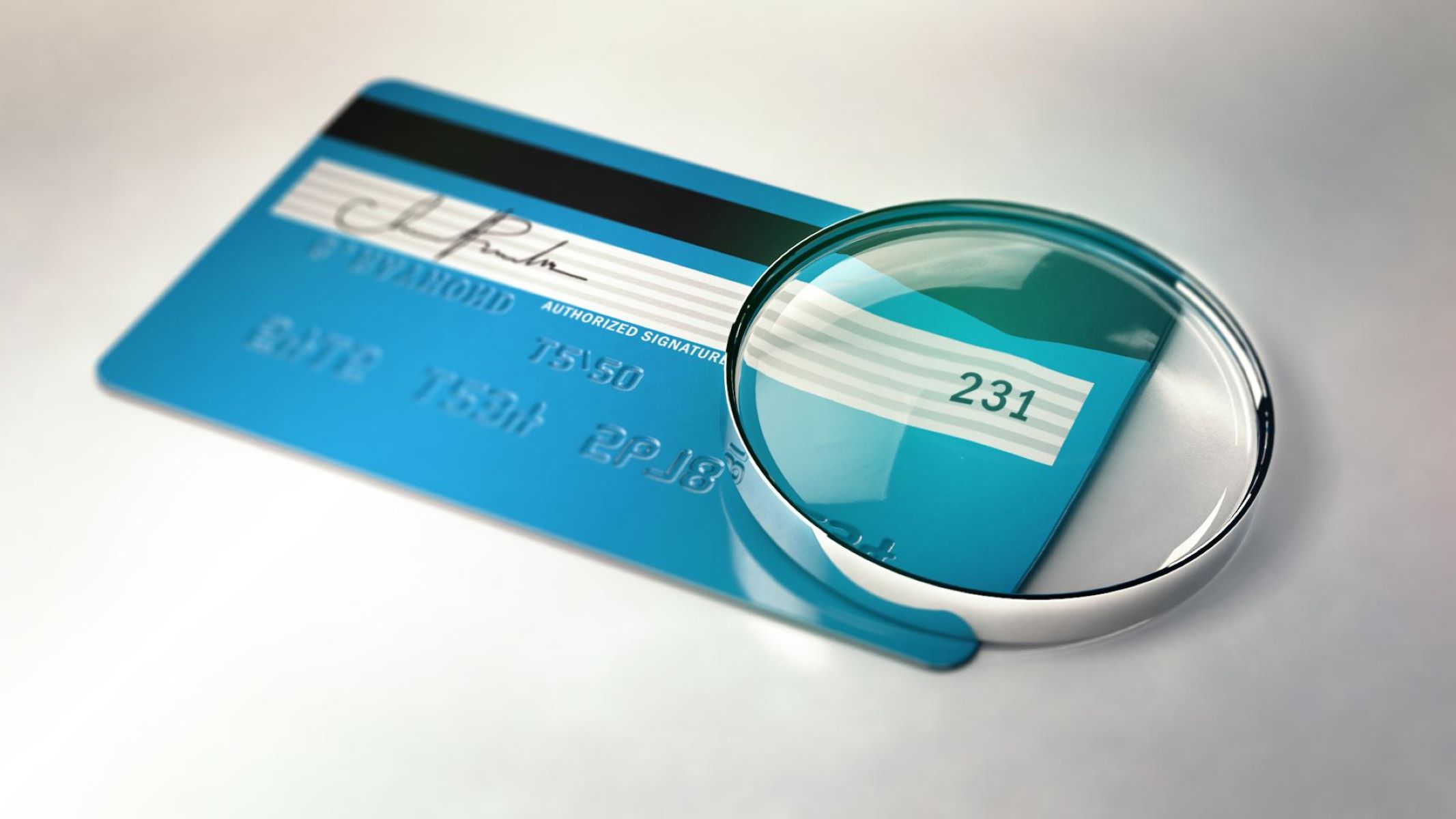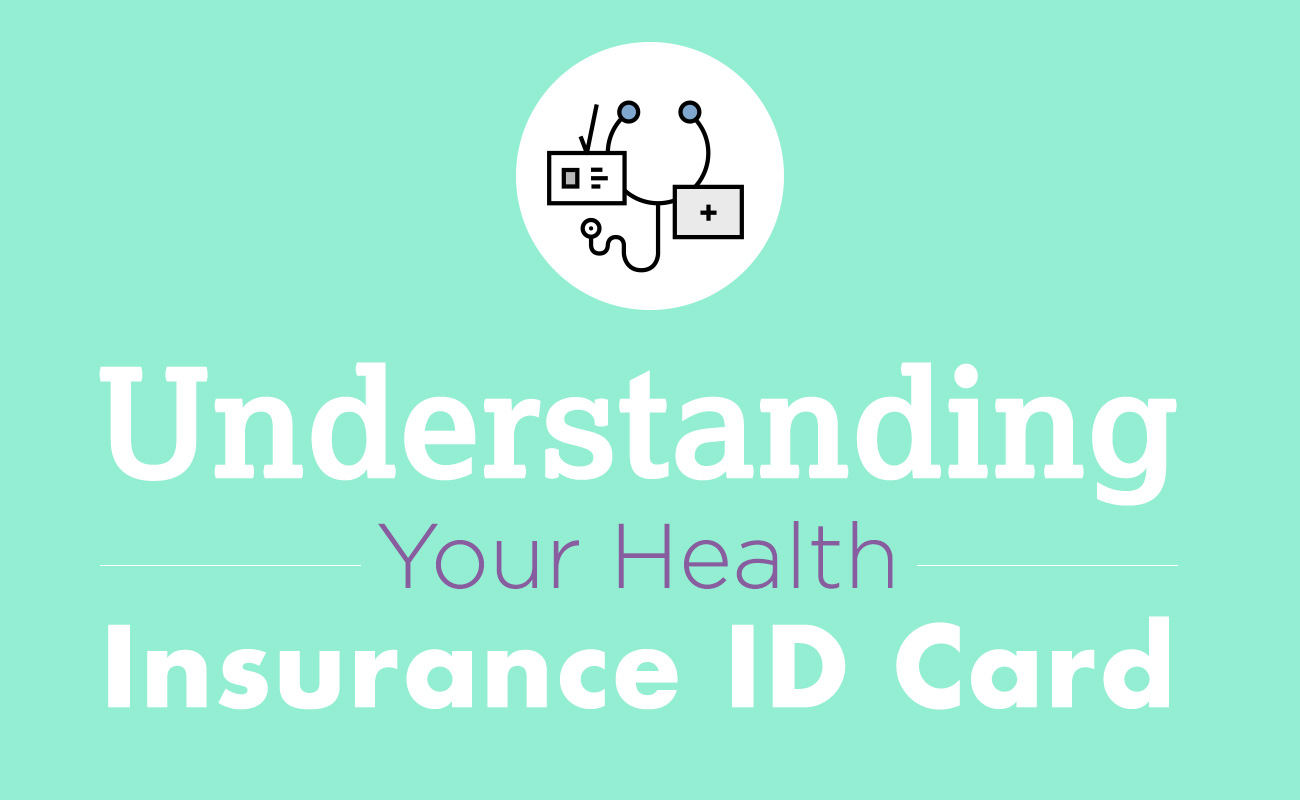

Finance
What Is A NAIC Number For Insurance?
Published: November 8, 2023
Learn about NAIC numbers for insurance and how they are used in the finance industry. Understand the importance of this unique identifier for insurance policies.
(Many of the links in this article redirect to a specific reviewed product. Your purchase of these products through affiliate links helps to generate commission for LiveWell, at no extra cost. Learn more)
Table of Contents
What Is a NAIC Number for Insurance?
When it comes to the insurance industry, there are various regulatory bodies and organizations that help ensure the smooth functioning and accountability of insurers. One such organization is the National Association of Insurance Commissioners (NAIC). The NAIC is a standard-setting body composed of insurance regulators from all 50 states, the District of Columbia, and five U.S. territories.
A NAIC number is a unique identification number assigned to insurance companies by the NAIC. This number serves as an identifier for individual insurers, allowing regulators, consumers, and other stakeholders to easily access and track information about a specific company.
The NAIC number is important because it helps in maintaining consistency and transparency within the insurance industry. It facilitates communication between regulators and insurers, streamlining processes such as licensing, reporting, and market conduct examinations. Additionally, it allows consumers to verify the authenticity and financial stability of an insurance company before making a policy purchase.
Each insurance company, regardless of its size or type, is assigned a NAIC number. The numbering system is designed to ensure uniqueness, with no two companies having the same number. This makes it easier for stakeholders to distinguish between different insurers and access the relevant information they need.
NAIC numbers typically consist of a combination of digits, letters, or a combination of both, depending on the state and territory they are assigned to. It is important for insurance companies to include their NAIC number on their website, marketing materials, and policy documents to provide easy access to this information.
Moreover, the NAIC number is often used in regulatory filings, such as annual financial statements, statutorily required reports, and market conduct examinations. It allows regulators to efficiently track and monitor the financial health, solvency, and compliance of insurers, ensuring they meet the necessary legal and operational requirements.
In summary, a NAIC number is an essential tool in the insurance industry. It plays a crucial role in identifying and tracking insurance companies, facilitating communication between regulators and insurers, and promoting transparency within the sector. Whether you are a regulator, consumer, or industry professional, understanding the significance of NAIC numbers can help you navigate the insurance landscape more effectively.
Overview of NAIC
The National Association of Insurance Commissioners (NAIC) is a non-profit organization that serves as the standard-setting and regulatory support body for insurance regulators in the United States. The NAIC is composed of insurance commissioners from all 50 states, the District of Columbia, and five U.S. territories.
The primary mission of the NAIC is to promote effective insurance regulation and ensure the protection of consumers in the insurance marketplace. It achieves this mission by developing model laws and regulations, conducting research and education programs, and providing support to state insurance departments.
The NAIC functions as a forum for insurance regulators to collaborate, share information, and establish best practices. It plays a crucial role in maintaining uniformity and consistency in insurance regulation across the country, despite varying state laws and regulations.
The association provides a wide range of services and resources to insurance regulators, including training and education programs, market conduct examinations, and financial solvency oversight of insurance companies. It also collects data and statistics on the insurance industry, which helps regulators monitor market trends and identify areas of concern.
The NAIC works closely with state insurance departments to ensure compliance with insurance laws and regulations. It assists in the licensing and accreditation of insurance companies, monitors the financial solvency of insurers, and investigates consumer complaints regarding insurance products and services.
Furthermore, the NAIC collaborates with other regulatory bodies, industry stakeholders, and consumer advocacy groups to address emerging issues and develop policies that promote the stability and competitiveness of the insurance market.
Overall, the NAIC plays a vital role in the insurance industry by providing a framework for effective regulation, promoting consumer protection, and fostering collaboration among state insurance regulators. Its efforts contribute to maintaining the integrity and stability of the insurance marketplace and ensuring the availability of affordable and reliable insurance products for consumers.
Purpose of NAIC Numbers
NAIC numbers serve several important purposes in the insurance industry. They are assigned to insurance companies by the National Association of Insurance Commissioners (NAIC) and are used as unique identifiers for individual insurers. Here are some key purposes of NAIC numbers:
- Identification: The primary purpose of NAIC numbers is to identify and distinguish insurance companies from one another. With thousands of insurance companies operating in the United States, it is vital to have a standardized system that allows regulators, consumers, and industry professionals to easily identify and track specific insurers.
- Regulatory Compliance: NAIC numbers are an integral part of regulatory compliance for insurance companies. They are used in various regulatory filings, such as financial statements, rate filings, and market conduct examinations. By assigning unique NAIC numbers to insurers, regulators can efficiently monitor the financial health, solvency, and compliance of each company, ensuring they adhere to state laws and regulations.
- Consumer Protection: NAIC numbers play a crucial role in consumer protection. Consumers can use these numbers to verify the authenticity and financial stability of an insurance company before purchasing a policy. By accessing information associated with the NAIC number, such as financial ratings and regulatory actions, consumers can make informed decisions and protect themselves from fraudulent or financially unstable insurers.
- Data Collection and Analysis: NAIC numbers facilitate data collection and analysis within the insurance industry. By assigning unique identifiers to insurers, the NAIC can collect accurate and comprehensive data on insurance companies’ financial performance, market share, and product offerings. This data helps regulators and industry stakeholders identify trends, assess risks, and develop policies that promote a stable and competitive insurance market.
- Efficient Communication: NAIC numbers streamline communication between insurance companies, regulators, and other stakeholders. Insurers can easily reference their NAIC number in correspondence, regulatory filings, and market conduct examinations, ensuring accurate and efficient communication. Regulators and consumers can also use NAIC numbers as a reference point when seeking information about a specific insurer.
In summary, NAIC numbers serve as unique identifiers for insurance companies and play a vital role in identification, regulatory compliance, consumer protection, data collection, and efficient communication within the insurance industry. By allocating these numbers, the NAIC promotes transparency, accountability, and effective regulation, benefiting both insurers and consumers alike.
How to Identify a NAIC Number
Identifying a NAIC number for an insurance company is relatively easy, as there are multiple ways to access this information. Here are some of the common methods to identify a NAIC number:
- Insurance Company Website: The official website of an insurance company is often a reliable source to find their NAIC number. Most insurers include this information on their website, typically in the “About” or “Contact Us” section. The NAIC number may be listed alongside other important company details, such as the company’s name, address, and contact information.
- Insurance Policy Documents: If you have an insurance policy document from a specific company, the NAIC number may be stated within the policy. Insurers often include their NAIC number on policy documents to provide easy access to this information for policyholders.
- Insurance Regulator Websites: State insurance department websites or the NAIC’s official website can be valuable resources to search for NAIC numbers. State insurance department websites usually have searchable databases where you can look up NAIC numbers by the name or location of the insurance company. The NAIC’s website also provides a directory of insurance companies, along with their corresponding NAIC numbers.
- Insurance Agent or Broker: If you are working with an insurance agent or broker, they should be able to provide you with the NAIC number of the insurance company you are interested in. Insurance professionals typically have access to databases that contain this information and can retrieve it for you upon request.
- NAIC Number Lookup Tools: There are online tools available that allow you to search for NAIC numbers by the name or location of an insurance company. These tools can be useful if you don’t have access to other sources or prefer a quick and convenient way to find the NAIC number you are looking for.
It is important to note that NAIC numbers may vary depending on the state or territory in which an insurance company operates. Therefore, it is recommended to verify the accuracy of the NAIC number you have obtained by cross-referencing it with official sources such as the NAIC or state insurance department websites.
By utilizing these methods, you can easily identify the NAIC number of an insurance company, enabling you to access relevant information about the company and make informed decisions regarding insurance policies and coverage.
Uses of NAIC Numbers in the Insurance Industry
NAIC numbers have several important uses within the insurance industry. These unique identification numbers facilitate communication, streamline regulatory processes, and provide valuable information to consumers and industry professionals. Here are some key uses of NAIC numbers:
- Identification and Tracking: NAIC numbers serve as unique identifiers for insurance companies. They help regulators, consumers, and industry professionals easily identify and track specific insurers. Whether it’s for licensing, regulatory filings, or market conduct examinations, NAIC numbers provide a standardized way to reference a company and its operations.
- Regulatory Compliance: NAIC numbers play a vital role in regulatory compliance for insurance companies. Regulators use these numbers to monitor and enforce compliance with state laws and regulations. NAIC numbers are often included in various regulatory filings, such as financial statements and rate filings, to ensure accurate reporting and transparency in the insurance industry.
- Consumer Protection: NAIC numbers are valuable tools for consumer protection. Consumers can use these numbers to verify the authenticity and financial stability of an insurance company before purchasing a policy. By accessing information associated with the NAIC number, such as financial ratings and regulatory actions, consumers can make informed decisions and protect themselves from fraudulent or financially unstable insurers.
- Data Collection and Analysis: NAIC numbers facilitate data collection and analysis within the insurance industry. These numbers allow for the collection of accurate and comprehensive data on insurance companies’ financial performance, market share, and product offerings. This data helps regulators and industry stakeholders track market trends, assess risks, and develop policies that promote a stable and competitive insurance market.
- Efficient Communication: NAIC numbers streamline communication between insurance companies, regulators, and other stakeholders. Insurers and regulators can easily reference NAIC numbers in correspondence, regulatory filings, and market conduct examinations, ensuring accurate and efficient communication. Consumers and industry professionals can also use NAIC numbers as reference points when seeking information about a specific insurer.
In summary, NAIC numbers are essential in the insurance industry due to their uses in identification, regulatory compliance, consumer protection, data collection and analysis, and efficient communication. By utilizing these unique identification numbers, stakeholders in the insurance industry can access accurate and relevant information, promote transparency, and ensure the stability and protection of consumers in the marketplace.
Obtaining a NAIC Number
Obtaining a NAIC number for an insurance company is a straightforward process that involves following certain steps and submitting the necessary documentation. Here is an overview of how to obtain a NAIC number:
- Register with State Insurance Department: The first step in obtaining a NAIC number is to register your insurance company with the relevant state insurance department. Each state has its own requirements and procedures for company registration, which may include completing an application, providing financial information, and paying any applicable fees.
- Provide Necessary Information: During the registration process, you will need to provide detailed information about your insurance company. This typically includes the company’s legal name, business address, organizational structure, ownership details, lines of insurance offered, and key personnel information.
- Submit Required Documents: Alongside the application, you may be required to submit supporting documents such as a business plan, financial statements, proof of capital adequacy, and evidence of compliance with state insurance laws and regulations.
- Undergo Regulatory Review: After submitting the application and supporting documents, the state insurance department will conduct a thorough review of your company’s information and evaluate its eligibility for a NAIC number. This may involve reviewing financial statements, conducting background checks, and assessing the company’s business operations.
- NAIC Number Assignment: Once the state insurance department approves your application, they will assign a NAIC number to your insurance company. This number is unique to your company and will be used for identification and regulatory purposes.
- Update Company Materials: After receiving your NAIC number, it is important to update your company materials, including your website, marketing materials, and policy documents, to include this identifier. This ensures easy access to your NAIC number for regulators, consumers, and industry professionals.
Note that the specific requirements and procedures for obtaining a NAIC number may vary from state to state. It is important to consult with the appropriate state insurance department or regulatory body for detailed instructions and guidance regarding the application process.
By successfully completing the registration and approval process with the state insurance department, you can obtain a NAIC number for your insurance company. This number will help identify and distinguish your company within the insurance industry, allowing for efficient communication, regulatory compliance, and consumer protection.
NAIC Numbers for Different Types of Insurance
NAIC numbers are assigned to insurance companies across various types of insurance, ensuring accurate identification and tracking within the industry. Here are some common types of insurance and their corresponding NAIC numbers:
- Property and Casualty Insurance: Property and casualty insurance, which includes coverage for homes, automobiles, and liability, is assigned NAIC numbers beginning with the digits 2000. These numbers are used to differentiate property and casualty insurers from others in the industry.
- Life Insurance: Life insurance providers are assigned NAIC numbers that typically begin with the digits 5000. These unique identifiers are used to differentiate life insurers from other types of insurance companies and facilitate regulatory compliance and data collection within the life insurance sector.
- Health Insurance: Health insurance companies are assigned NAIC numbers that usually start with the digits 6000. These numbers distinguish health insurers from other insurers and help regulators monitor and enforce compliance with health insurance regulations.
- Reinsurance: Reinsurance companies, which provide insurance coverage to other insurers, are assigned NAIC numbers that often begin with the digits 7000. These numbers help identify reinsurance providers and track their activities in the insurance marketplace.
- Specialty Lines Insurance: Specialty lines insurance, such as marine, aviation, and surety insurance, have dedicated NAIC numbers to differentiate them within the industry. These numbers start with various digit combinations, depending on the specific specialty line and the state regulations.
It’s important to note that while NAIC numbers provide identification for different types of insurance, they do not signify the specific products or coverage offered by an insurance company. The NAIC number primarily serves as a unique identifier for the company itself.
Additionally, the NAIC numbers assigned to insurance companies may vary slightly between states due to regional requirements and regulations. Therefore, it’s necessary to check the specific NAIC number assigned to an insurance company within a particular state or territory.
In summary, NAIC numbers are assigned to insurance companies across various types of insurance to ensure accurate tracking and identification within the industry. These unique identifiers help differentiate insurers based on their specific line of business, facilitating regulatory compliance, data collection, and communication within the insurance marketplace.
NAIC Numbers and Regulatory Compliance
NAIC numbers play a crucial role in regulatory compliance for insurance companies. These unique identification numbers are used by regulators to monitor and enforce compliance with state insurance laws and regulations. Here’s how NAIC numbers contribute to regulatory compliance:
- Efficient Monitoring: Regulators use NAIC numbers to efficiently monitor insurance companies. These numbers serve as a reference point for regulators when conducting examinations, audits, and investigations. By identifying individual insurers through their NAIC numbers, regulators can focus their efforts on specific companies and ensure compliance with regulatory requirements.
- Accurate Reporting: NAIC numbers are included in various regulatory filings that insurers are required to submit. These filings may include financial statements, rate filings, market conduct reports, and more. By including the NAIC number, insurers ensure accurate reporting and provide regulators with the necessary information to assess their compliance with state insurance laws.
- Financial Solvency Oversight: Regulators use NAIC numbers to monitor the financial solvency of insurance companies. Through regular financial reporting, insurers provide information associated with their NAIC number, such as capital adequacy, reserves, and investments. Regulators can assess the financial health of insurers based on this information and take appropriate regulatory actions if necessary.
- Market Conduct Examinations: Market conduct examinations are conducted by regulators to assess an insurer’s compliance with consumer protection laws and market practices. NAIC numbers help regulators identify and target specific insurers for these examinations. By focusing on individual companies, regulators can thoroughly evaluate business practices, claims handling, marketing activities, and other aspects to ensure compliance with regulatory standards.
- Enforcement Actions: In cases where an insurer is found to be non-compliant with regulatory requirements, regulators can take enforcement actions. NAIC numbers help regulators track and attribute violations and penalties to specific insurance companies. This ensures that appropriate actions are taken to address compliance issues and protect consumers’ interests.
By utilizing NAIC numbers, regulators can effectively monitor, enforce, and promote compliance with state insurance laws and regulations. This process helps maintain the integrity and stability of the insurance marketplace, safeguard consumer interests, and ensure fair and equitable practices within the industry.
NAIC Number Lookup and Resources
Finding a NAIC number for a specific insurance company or accessing related information is made easier through various lookup tools and resources. Here are some valuable resources for NAIC number lookup:
- State Insurance Department Websites: Many state insurance department websites offer searchable databases or directories where you can find NAIC numbers. These websites typically allow you to search by company name, location, or other criteria to retrieve the corresponding NAIC number.
- NAIC Company Search Tool: The NAIC provides a user-friendly company search tool on its official website. This tool allows you to search for insurance companies, view their NAIC numbers, and access additional information about the companies, such as their license status and regulatory actions.
- Insurance Agent or Broker: If you are working with an insurance agent or broker, they may have access to databases or resources that can provide you with a NAIC number. Insurance professionals often possess tools and industry-specific resources to retrieve this information efficiently.
- Insurance Company Website: Insurers typically include their NAIC number on their official website. Check the “About” or “Contact Us” section of the insurance company’s website to find their NAIC number. It is often displayed alongside other important company details and contact information.
- Professional Insurance Associations: Professional associations related to the insurance industry may provide resources and information for NAIC number lookup. These associations can be valuable sources for professionals seeking specific NAIC numbers or industry-related data.
When using NAIC number lookup tools or resources, it is essential to verify the accuracy of the information obtained. Cross-referencing the NAIC number with multiple sources, such as state insurance department websites or the NAIC’s official database, ensures that you have the correct and up-to-date information.
Additionally, it is worth noting that NAIC numbers may vary slightly between states, so it’s important to check the specific NAIC number assigned to an insurance company within a particular state or territory.
By leveraging these lookup tools and resources, insurance regulators, industry professionals, and consumers can easily access NAIC numbers and related information, promoting transparency and facilitating effective communication within the insurance industry.
Conclusion
NAIC numbers play a vital role in the insurance industry, serving as unique identification numbers for insurance companies. These numbers facilitate efficient communication, streamline regulatory processes, promote transparency, and ensure consumer protection. Throughout this article, we have examined the various aspects and uses of NAIC numbers in the insurance industry.
From the first section, we learned about the NAIC as a standard-setting body composed of insurance regulators from all 50 states and territories. We then explored the purpose and significance of NAIC numbers, understanding their importance in maintaining consistency and transparency within the insurance marketplace.
Next, we discussed the various methods to identify a NAIC number, including insurance company websites, policy documents, state insurance department websites, insurance professionals, and online lookup tools. These sources help stakeholders easily access and verify NAIC numbers for specific insurers.
We also explored the uses of NAIC numbers in the insurance industry, such as identification and tracking of insurers, regulatory compliance, consumer protection, data collection and analysis, and efficient communication between stakeholders.
Understanding the process of obtaining a NAIC number highlighted the necessary steps involved in registering an insurance company with the state insurance department and receiving an assigned NAIC number. We emphasized the importance of updating company materials to include the NAIC number for easy reference.
The section on NAIC numbers for different types of insurance highlighted the specific NAIC number prefixes associated with property and casualty insurance, life insurance, health insurance, reinsurance, and specialty lines insurance. We recognized the importance of these unique identifiers in differentiating insurers based on their specific lines of business.
The significance of NAIC numbers in regulatory compliance was emphasized, as regulators utilize these numbers to efficiently monitor insurers, ensure accurate reporting, oversee financial solvency, conduct market conduct examinations, and enforce compliance with state insurance laws and regulations.
Lastly, we discussed the various resources available for NAIC number lookup, including state insurance department websites, the NAIC’s company search tool, insurance professionals, insurance company websites, and professional insurance associations.
In conclusion, NAIC numbers are essential tools in the insurance industry, serving as unique identifiers for insurers and enabling efficient communication, regulatory compliance, and consumer protection. Understanding the significance of NAIC numbers empowers stakeholders to navigate the insurance landscape more effectively and contributes to maintaining integrity and stability within the industry.














